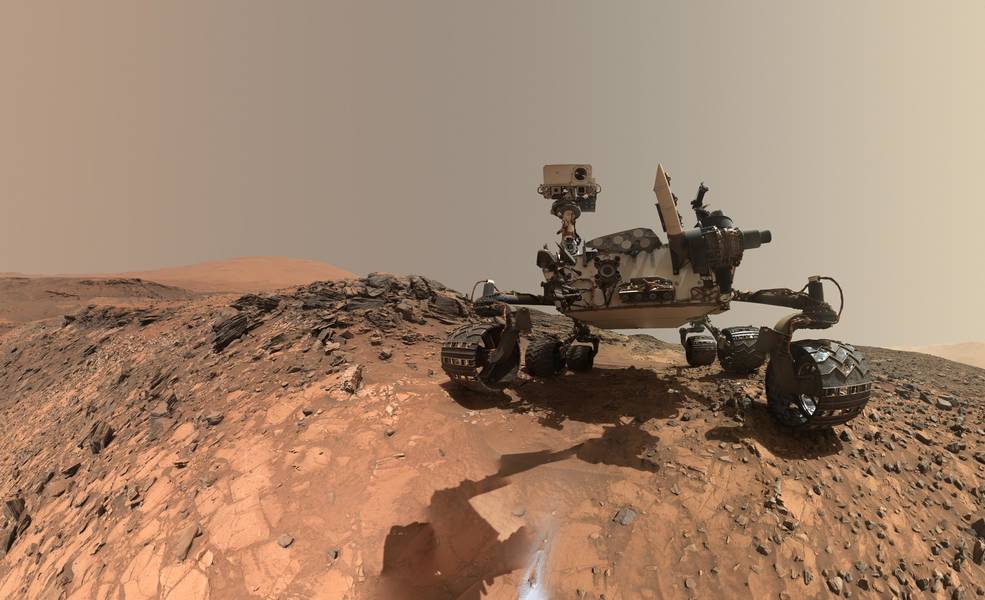NASA's Curiosity rover has produced new key evidence in determining whether Mars has ever hosted life. While drilling in an ancient lakebed, Curiosity recently discovered organic material more complex and abundant than previously found on the Red Planet. On Earth, chains of organic molecules, which contain the element carbon, form the basic building blocks of life. Far more investigation will be necessary, however, to identify the source of the Martian material as either biological or geological. Besides life, likelier sources of the organic material include impacting asteroids and volcanism. See also: Asteroid; Astrobiology; Carbon; Geology; Mars; Organic chemistry; Volcano

In the years since Curiosity’s landing in Gale Crater in 2012, terrestrial scientists have remotely wielded the rover's array of instruments to probe the local Martian environment. One of these tools—a drill—recently bore a few centimeters beneath a 3-billion-year-old mudstone. At the time of the sedimentary stone's formation, Mars is thought to have possessed liquid water on its surface and a habitable climate—a marked contrast to today's desiccated and radiation-blasted world, where life cannot survive. Collected samples of the pulverized subsurface soil were then baked in an oven onboard Curiosity to temperatures exceeding 500°C (932°F), releasing organic compounds. A gas chromatograph and a mass spectrometer detected rich chemical diversity in the samples, including thiophenic, aromatic, and aliphatic compounds. In aggregate, the molecules strongly resemble those comprising kerogen, a substance on Earth made of the remains of marine microorganisms, plants, and animals and which is a major starting material for fossil fuels. See also: Aromatic hydrocarbon; Fossil fuel; Kerogen; Thiophene
In another intriguing finding published alongside the mudstone discovery, the Curiosity rover reported a seasonal fluctuation in the organic compound methane in the Martian atmosphere. Curiosity has now operated on Mars for three of the planet's years (the equivalent of six terrestrial years), a sufficient time period for its sensors to have detected methane levels rising in summer and falling in winter. Although a geological origin seems likelier, just as with the mudstone findings, methane production is notably a hallmark of Earth-based microbes known as methanogens. See also: Methane; Methanogenesis (bacteria)
Two new missions will further explore the possibilities of Martian life, whether extinct or perhaps still actively respiring. NASA's next rover, temporarily named the Mars 2020 rover for its anticipated landing date, will dig deeper than Curiosity. The next-generation robotic probe will uncover chemical evidence going farther back in history and that has been better protected from the harsh, modern Martian environment. In the same year, the European Space Agency will land its ExoMars rover to likewise reach farther down into the Red Planet in the hopes of ferreting out its most profound secrets. See also: Respiration; Robotics





